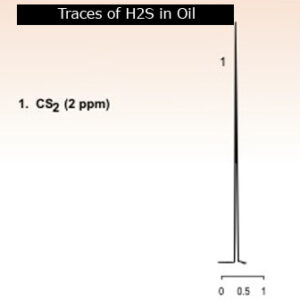
H2S in Furnace Oil Analysis:
HYDROGEN SULPHIDE IN BUNKERS AND CRUDE OIL
H2S detection and Measurement
It is important to learn how this gas can be detected and how to measure the level of the gas in the relevant environment. The best detection and analysis device is the human nose and thus the “old saying” with respect to this type of gas is “if you can smell it (it smells like rotten eggs) then it is safer (maybe) but it is dangerous when you can’t smell it”. If you know it is there because you can smell it, then fine it can be measured, but what happens when you can’t smell it due to its higher concentration in the environment – How do you know that it is important to measure its concentration? It is worthwhile stating that the Threshold Limiting Value (TLV – 8 hours) for Hydrogen Sulphide is stated to be 10 ppm in its gas phase but the European Union has recently required that in the event that the Hydrogen Sulphide level exceeds 5 ppm then closed environment systems are required to contain the escape of this gas.
Hydrogen Sulphide Detection:
Measurement of hydrogen sulphide (H2S) content in furnace oil samples.
Impurity Testing:
Identification and quantification of other sulphur compounds and impurities that may affect fuel quality and combustion performance.
Safety Assessment:
Evaluation of H2S levels to ensure safe handling and use of furnace oil in industrial applications.
Pacific Labs specializes in H2S in Furnace Oil Analysis, offering comprehensive testing services to ensure safety and efficiency. Our advanced analysis accurately measures hydrogen sulfide content in furnace oil, helping industries maintain operational integrity, meet regulatory standards, and ensure a safe working environment.

